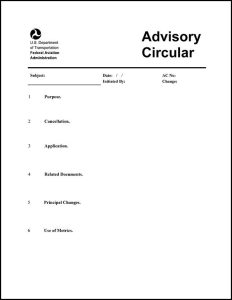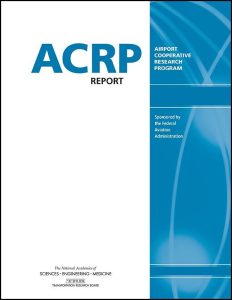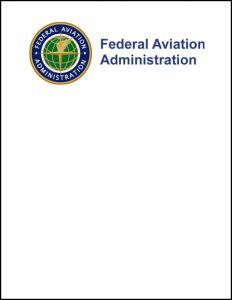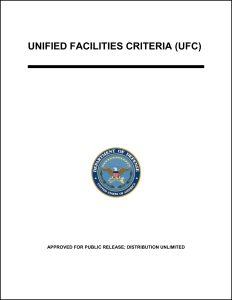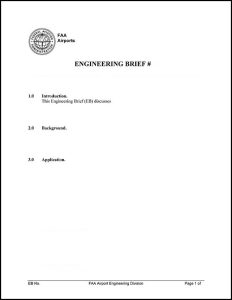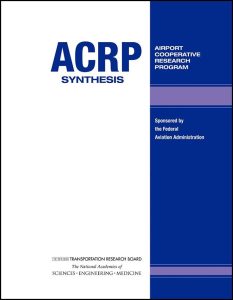To narrow the library of airside resources, use the filter boxes or airport map below or search box above.
Click an item below to expand.
Resources Matching Your Search
2017
This advisory circular (AC) establishes a common, uniform definition of critical aircraft for all deliberations of the FAA Office of Airports, inclusive of planning and environmental, design and engineering, and financial decision-making regarding airport development.
2021
This webpage includes planning manuals by the aircraft manufacturer that provide, in an industry-standardized format, airplane characteristics data for general airport planning. Sections within each document include general dimensions of the aircraft, as well as the necessary information for ramp, servicing operations, or maintenance preparations.
2021
The documents in this website provide, in an industry-standardized format, airplane characteristics data for general airport planning. Sections within each document include airplane description, airplane performance, ground maneuvering, terminal servicing, operating conditions, and pavement data.
2021
This resource is a webpage that provides information on the Electronic Code of Federal Regulations (e-CFR) Title 14, Chapter I, Subchapter E, Part 77, which contains guidance on the safe and efficient use as well as the preservation of the navigable airspace.
2021
This advisory circular (AC) provides guidance on the design and evaluation of pavements used by aircraft at civil airports. It addresses soil investigations and evaluation; flexible and rigid pavement design; pavement maintenance, rehabilitation and reconstruction; pavement structural analysis and pavement design for shoulders.
2013
ACRP Report 96 provides best practices for planning, designing, and marking apron areas for all sizes and types of airports in the United States. Apron planning and design considerations include facility geometrics, aircraft maneuvering, apron/airfield access points, operational characteristics, markings, lighting, and aircraft fleets. The report summarizes apron planning and design best practices for incorporating flexibility, increasing efficiency, and enhancing the safety of apron facilities.
2015
This advisory circular (AC) provides guidance for the preparation of master plans for airports that range in size and function, from small general aviation to large commercial service facilities. The intent of this AC is to foster a flexible approach to master planning that directs attention and resources to critical issues. The scope of each master plan must be tailored to the individual airport under evaluation.
2020
This policy guidance document provides clarification to the Airports Division Regional Office (RO) and Airports District Office (ADO) program managers (PMs), planners, and engineers on the use of declared distances for non-turbine-powered airplanes.
2020
This manual provides standardized airfield, heliport, and airspace criteria for the geometric layout, design, and construction of runways, helipads, taxiways, aprons, landing zones (LZs), short takeoff and vertical landing (STOVL) facilities, unmanned aircraft system (UAS) facilities, and related permanent facilities to meet sustained operations for U.S. Army, Navy, Air Force, and Marine Corps airfields.
2001
This document presents criteria for the evaluation of the load-carrying capacity of pavements used (or to be used) for the support of aircraft. An evaluation is conducted to assess the allowable traffic that a pavement can sustain for given loading conditions or the allowable load for a given amount of traffic without producing unexpected or uncontrolled distress. This document is for use in evaluating U.S. Army, Air Force, Navy, and Marine Corps airfields and heliports and is applicable to conventional-type pavements. The procedures presented include direct sampling and non-destructive testing techniques. The document also describes computer programs that can be used for pavement evaluation.
1983
This advisory circular (AC) explains how to compute airport capacity and aircraft delay for airport planning and design. The consolidated file contains changes 1 and 2.
2018
Engineering Brief (EB) 94 discusses the results of analyzing the potential effect of accommodating the new Boeing B-777 Folding Wingtip Airplane on airport geometry and the application of FAA airport design standards.
2007
Engineering Brief (EB) 65A provides airport operators and FAA Airports Regional Offices guidance when airport operators must file a modification to standard (MoS) and construction options to address the operational requirements imposed by Flight Standards on A380 landing and takeoff operations.
2019
ACRP Synthesis 97 explores the concept of upgauging, which is an airline industry technique enabling air carriers to increase capacity by adding seats to existing jets and replacing smaller planes with larger ones. While these practices are generally the result of airline network and systemwide strategies, their impacts are often experienced at the local level by the airport community. This report takes into account the principal drivers and techniques of upgauging from airline and airport perspectives. This study is based on information acquired through a literature review, survey results from 18 airports participating in the study that experienced major variations in passenger enplanements over the previous five to 10 years, and interviews with representatives of five airports and four state transportation agencies.
2018
This Excel spreadsheet provides aircraft characteristics from the FAA's database.
2021
Airport design software supports pavement design and pay reductions for airport pavement projects. The available software includes FAARFIELD, COMFAA, COMPSYS, and other programs. FAARFIELD 2.0 is the standard thickness design software accompanying AC 150/5320-6G Airport Pavement Design and Evaluation. FAARFIELD 2.0 replaces all previous versions of FAARFIELD. COMFAA 3.0, as introduced in Version B of AC 150/5335-5, is the recommended method to determine airport runway, taxiway, and apron pavement strength with the Aircraft Classification Number - Pavement Classification Number (ACN-PCN) method. The software is capable of calculating aircraft classification numbers in accordance with the International Civil Aviation Organization (ICAO) procedure.
2011
Engineering Brief (EB) 74A documents that on August 12, 2011, the Flight Standards Service issued a memorandum to the Office of Airport Safety and Standards describing the Flight Standardization Board's (FSB) findings for the B747-8. The team found that the Boeing 747-8 could be safely operated on runways as narrow as 150 feet (45 m) with the use of average pilot skills and knowledge.
